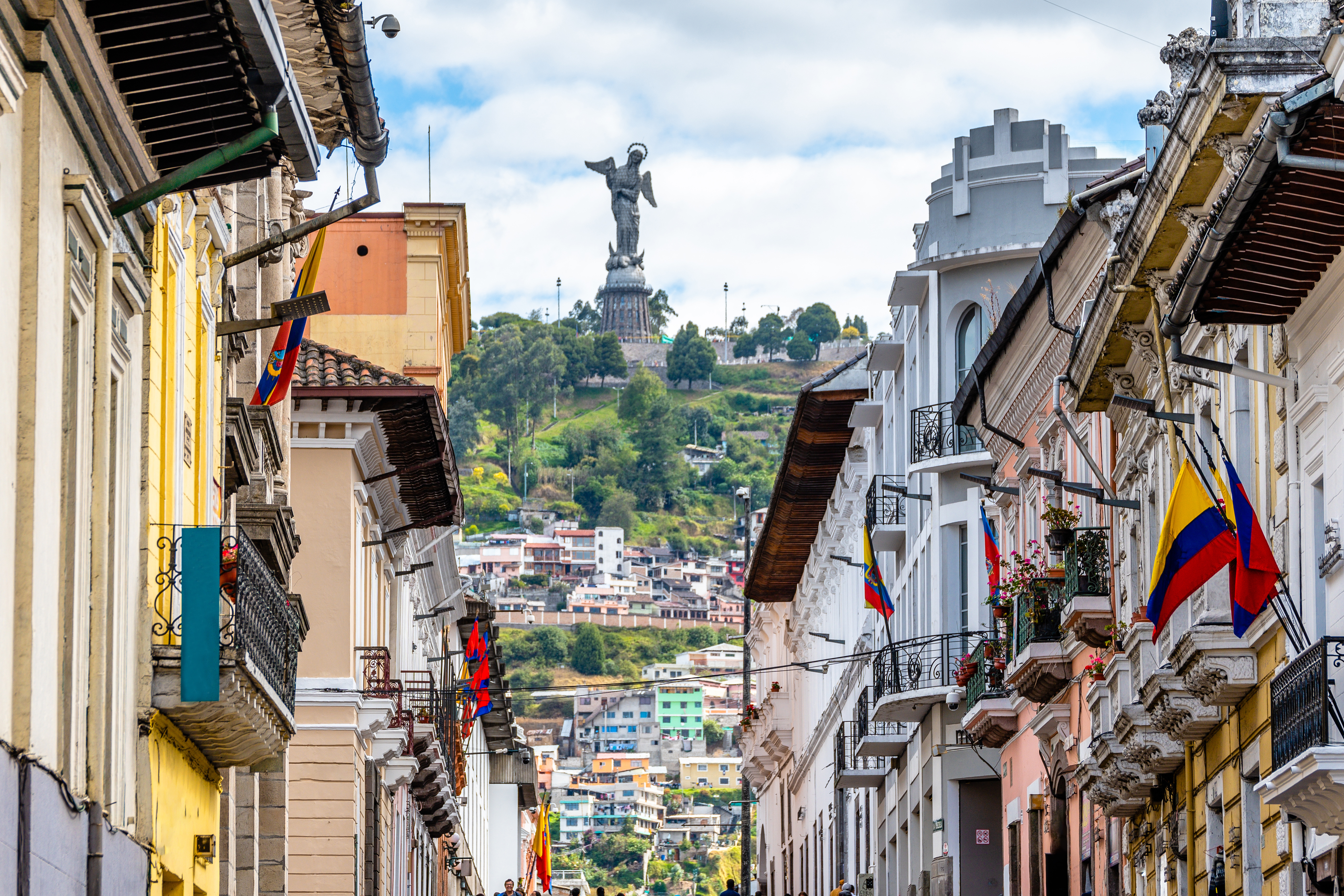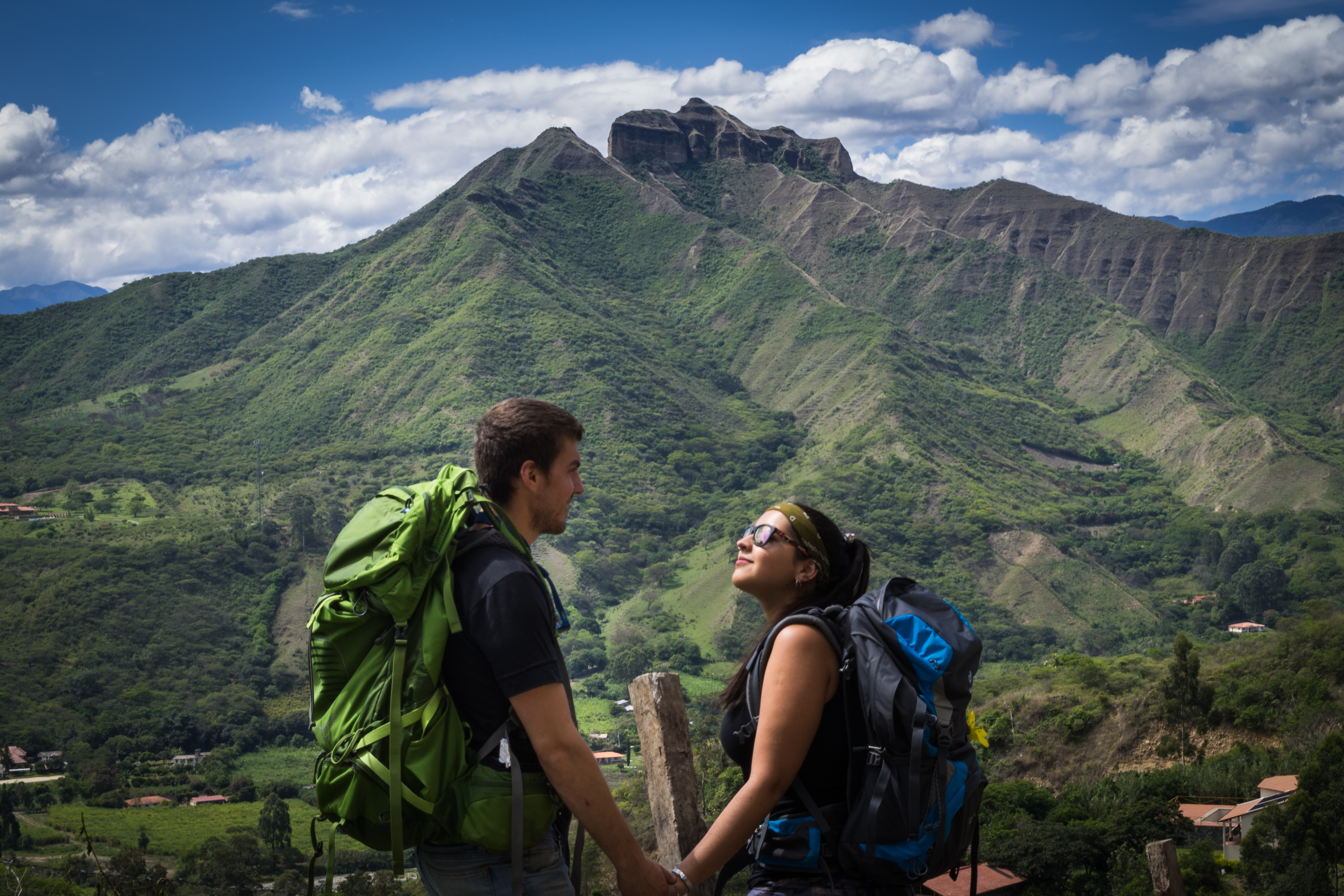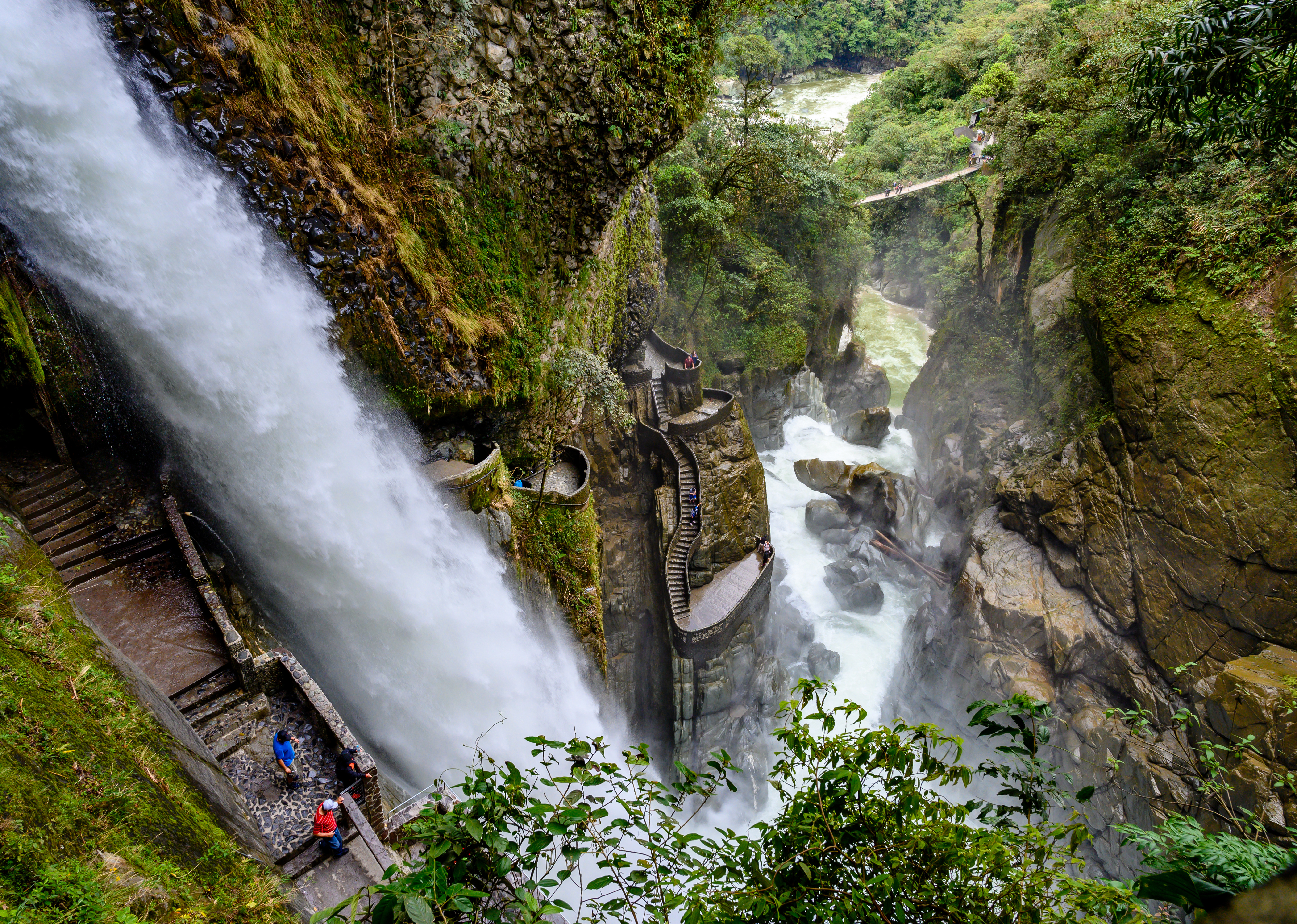
IS IT SAFE TO TRAVEL TO ECUADOR?
When people travel to Ecuador, they generally visit one of two locations:
- The Galapagos
- Not the Galapagos
As a result, when you ponder whether it’s safe to travel to Ecuador, it’s important to understand that travel-safety issues and outcomes can be vastly different depending on which Ecuador you visit.
General Safety Overview
Given the split in travel, you’d expect Ecuador to offer travelers a mixed safety picture – and you’d be right.
The Global Peace Index ranks Ecuador at 130 out of 163 countries, with high rates of homicides and violent crime.
The city-rating app GeoSure Global gives Quito low marks for physical safety and theft – in the 30s out of 100 – and Guayaquil even lower marks for physical safety, but these ratings aren’t tremendously different from other cities in the region.

The State Department
The State Department gives Ecuador level-2 status (“Exercise Increased Caution”) due to civil unrest and crime, particularly kidnapping.
The State Department elaborates on the crime category by noting things like:
- Pickpocketing
- Hotel-room thefts in Quito and Guayaquil
- ATM robberies, sometimes triggered by a taxi ride
- Carjackings
- Sexual assaults
- Credit-card skimming
However, those are big-city concerns and not likely to trouble visitors taking a Galapagos cruise.
In addition, while these are serious, they’re not widespread; if they were, Ecuador would have higher than a level-two rating.
The bottom line: Be careful and vigilant, but understand that crime in Ecuador is not as pervasive as some sources might have you believe.
Natural Threats to Safety
Ecuador is a nature-lover’s paradise – and the country has embraced ecotourism. In addition to the Galapagos, adventuresome travelers can check out:
- Cuicocha Lake: A large, beautiful lake formed in the crater of a massive extinct volcano, about two hours north of Quito
- Cotopaxi National Park: One of many national parks located along the country’s mountainous spine, snow-covered Cotopaxi claims to be the world’s tallest active volcano
- Cajas National Park: A wonderland of cloud lakes and forests located a short drive from Guayaquil
- Rainforests: Deep, dark steamy jungles teeming with wildlife, generally south and east of Yasuni National Park
- Isla de la Plata: The “poor man’s Galapagos,” offering nature hikes, whale-watching, and more
However, increased tourist activity in wild and dangerous areas comes with specific safety concerns, including:
- Natural disasters
- Insect- and animal-borne diseases
- Trail safety
- Safety in the Galapagos

Natural Disasters
Ecuador's combination of mountains, jungles and coast includes active volcanoes, earthquake-prone zones, and a rainy season that can lead to flooding and landslides. Here’s how to stay prepared:
- Volcanoes: Research active volcanoes in areas you plan to visit. Start here. If there is an eruption in the area where you plan to travel, follow local advisories and stay updated on volcanic activity.
- Earthquakes: Follow the volcano link above for earthquake tracking. Know basic earthquake safety tips (though when the ground starts shaking, there’s often little you can do). The CDC has additional earthquake tips.
- Floods/landslides: The rainy season is typically December-May, and floods are common. Plan your activities accordingly, drive cautiously, and stay informed about weather conditions.
Diseases
Ecuador, being an equatorial country with a lot of standing water, is home to the entire spectrum of mosquito-borne diseases, including:
- Chikungunya
- Dengue
- Malaria
- Yellow fever
- Zika
In addition, chagas disease, which is caused by a beetle-borne parasite, is also found in Ecuador.
Throw in poisonous snakes, spiders, and scorpions, and you have plenty to worry about from the creepy-crawlies.
The best advice for dealing with the nastiness is:
- Stay up-to-date on vaccinations, particularly hepatitis A, typhoid, and yellow fever, especially if traveling to rural areas or the Amazon basin
- Use mosquito repellent with a high DEET concentration
- Sleep under mosquito netting
- Know how to treat snake and spider bites
- Carry a first-aid kit
- Seek medical help for infections or other complications
You may also encounter water-borne diseases in Ecuador, whether in the cities or hiking through the country.
In the country, protect yourself by carrying a purifying water bottle or other means of water purification; in the cities, drink bottled water and avoid consuming drinks with ice in them or raw foods that have been washed.
Finally, when consuming street food, only eat freshly cooked hot food or fruits and vegetables where the protective outer layer can be removed.

Trail Safety
If you’re hiking in the mountains, acclimate gradually to avoid altitude sickness. Drink plenty of fluids and take it easy during the first few days.
Stick to marked trails, and wear footwear appropriate for slick, rocky, and muddy conditions.
Carry food, maps and a first-aid kit in addition to fluids, and let multiple people know where you’re going and what you’re doing.
Don’t rely on your cellphone to connect you to help in case of an emergency.
The Galapagos
If you’re visiting the Galapagos:
- Choose a reputable tour operator with a stellar safety record. Check and verify reviews before booking.
- Pack appropriately. Be sure to have footwear meant for clambering around sharp, slick rocks.
- Be sun-smart. The equatorial sun is wicked. Pack a wide-brimmed hat and consider rash guards or other protective clothing.
- Don’t enter the water unless instructed by a tour guide. Be aware of currents, waves, and tidal activity.
- Don’t get hurt. According to the State Department, “The two hospitals on Santa Cruz and San Cristobal Islands do not perform major medical procedures.”
- Be careful diving. There are limited decompression facilities for scuba divers.
Personal Protection in Ecuador
Petty theft in Quito and Guayaquil is an issue, just as it is in cities worldwide. To minimize risk:
- Stay vigilant: Keep an eye on your belongings, especially in crowded areas.
- Use hotel safes: Store valuables in hotel safes instead of carrying them around. If you don’t trust the hotel safes, consider a packable safe.
- Invest in safer gear: Consider “pickpocket-proof” clothing or backpacks with cut-proof straps.
- Avoid displaying wealth: Leave the flashy jewelry home and be discreet about using your phone.
Transportation Safety
Getting around Ecuador requires some perspicacity. Here's what you need to know.
Driving
Like many South American countries, Ecuador offers a challenging driving experience, with high speeds, poorly maintained vehicles and roads, narrow lanes, sudden rockslides and washouts, random animals and pedestrians in the roadways, and unclear signage.
If you rent a car, drive defensively and follow local traffic laws. Give yourself plenty of time to get to your destination.
Public transportation
Buses are a common mode of transport, but according to the State Department they’re unreliable and can harbor criminals.
Taxi service is available in the cities. Use registered taxis (yellow with orange stickers on the door, in Quito) or apps like Uber for safer and more reliable service.
Call for cab service. Avoid hailing cabs on the street, especially at night.
Other transportation
Ecuador has scheduled air service to major cities in the country and throughout South America. It’s safe and reliable, but smaller air services and bush pilots can be unreliable and unsafe. Do your homework.
If you’re taking a cruise to the Galapagos, you’ll generally leave from Baltra and loop around the islands.
Boats from reputable cruise lines are very safe, and many cruise operators include transportation from the airport to your hotel and from the hotel to the dock.
If they don’t, it’s a five-minute bus ride from the Baltra airport to the dock.

Safety Tips for Solo Travelers
If you’re a solo traveler in Ecuador you may face additional challenges, especially if you’re female. Here are a few tips:
- Stay connected: Keep family or friends informed about your travel plans and check in regularly.
- Join groups: Consider joining group tours for certain activities. It’s a great way to meet people and stay safe. Viator or a similar service can help you find group activities.
- Trust your instincts: If something doesn’t feel right, leave the area or seek help.
- Grab the right apps: In addition to GeoSure, Noonlight is a top safety pick.
Travel Insurance
The State Department notes that medical evacuation from the Galapagos can cost $60,000 or more. As a result, it strongly (in boldface type, no less) recommends travel insurance with air evacuation for all visitors to Ecuador.
A plan with the highest levels of medical-evacuation coverage, like AdrenalineCare® from Berkshire Hathaway Travel Protection, or BHTP’s exclusive cruise insurance, WaveCare®, can protect your travel investment, provide peace of mind, and pay promptly for needed emergency services.
Getting covered is easy, and starts with BHTP’s simple quote process.
Ecuador has a lot to offer all travelers, but adventure-minded types and ecotourists in particular. With good preparation and awareness of your surroundings, you can have an amazing vacation to one of the most biodiverse countries on the planet.
Questions About Travel Insurance?
Check out our online guide, "What Is Travel Insurance All About?" We've provided in-depth answers to all your travel insurance questions, starting with the basics.